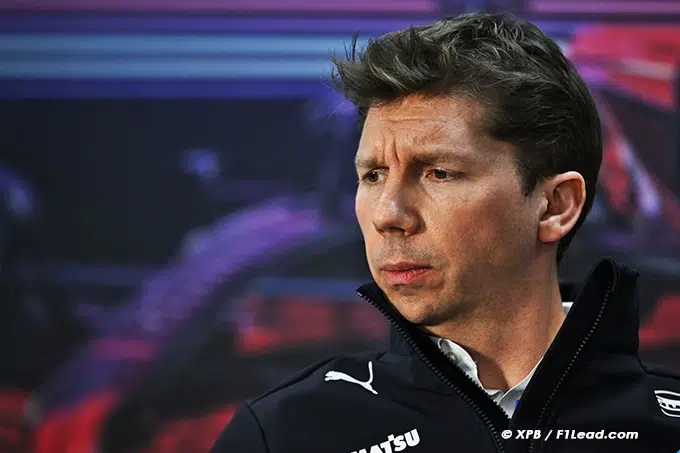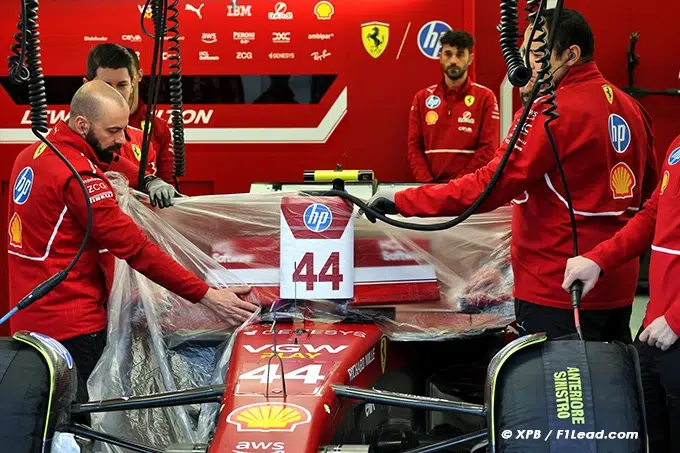Lewis Hamilton’s relentless adjustments push engineers to adapt, creating both challenges and breakthroughs in car performance and race strategy.
James Vowles believes Lewis Hamilton has an impressive ability to adjust a car’s settings as soon as he is on track. The former Mercedes F1 engineer explains how this could have both positive and negative effects.
“Lewis had an incredible natural talent,” Vowles told the High Performance podcast. “He has these tendencies and traits where, in the early runs, he’s like an octopus on the wheel. He changes all the settings and explores them. But that’s what makes him extraordinary.”
Vowles recalls an instance where Hamilton’s technical exploration made him faster: “There was a moment during a simulation in Brazil when the data indicated that seventh gear should be used on the climb. Nico did exactly what we asked.”
“In just two laps, Lewis thought, ‘This isn’t right,’ dropped to sixth, and found a tenth. Nico only realized it after the session when he saw the data. He’s an optimizer. He uses the data as a starting point, but his instinct for this is sharper than anyone else’s.”
This approach allowed the seven-time world champion to optimize his braking ability, one of his key strengths: “He has no hesitation in pushing the limits. Initially, that meant he often ran wide at Turn 1, found the absolute braking limit, overshot the first corner, and then aborted his lap.”
“One of our biggest frustrations with him was that out of 20 laps, he only completed one. We thought he needed to do more than that. But if you look at Lewis’s maturity from 13 years old to today, you’ll see that he now completes every lap. He found a way to gain experience and turn it into a lap.”
“But he was a perfectionist, and braking was his strength, his key asset: ‘Maximize everything under braking, and I’ll know the limits of the car—then I can build from there and get into the rhythm.’”
However, his ability to constantly fine-tune the car created challenges for the engineers: “Because he explored all these limits, within just a few laps in the early runs—while also learning the track incredibly quickly—he already knew the car’s limitations and the constraints of the tools available on the wheel.”
“It was quite fast, for what it’s worth. He understood how to position the car correctly as grip levels increased. It’s very, very impressive—where others would take seven or eight laps to learn the circuit, he had already explored a significant portion of the limits. But it didn’t come without drawbacks.”
“Oftentimes, he changed the car so quickly that you would lose track. As engineers, it’s certainly challenging when all the data is shifting—the track evolves, grip levels change, and the driver is constantly adjusting everything on the wheel.”
“You don’t know where you are, and then he comes in, and we’ve altered the aerodynamic balance. At that point, it feels like starting from scratch. That’s one of the reasons why, at times, you see Lewis drop back and then surge forward again—he reverts to a familiar setup and gets back into the fight.”
“But he has the ability to do that, which many drivers don’t. He’s willing to experiment frequently, even spending an entire session in a suboptimal setup, but he learns from it—and that’s Lewis.”

- Discover More>Marko Unfazed by Verstappen Exit Rumors
- Follow us on >Facebook and >Twitter for F1 updates
Why Hamilton’s Constant Tweaks Keep Engineers on Their Toes Why Hamilton’s Constant Tweaks Keep Engineers on Their Toes Why Hamilton’s Constant Tweaks Keep Engineers on Their Toes
